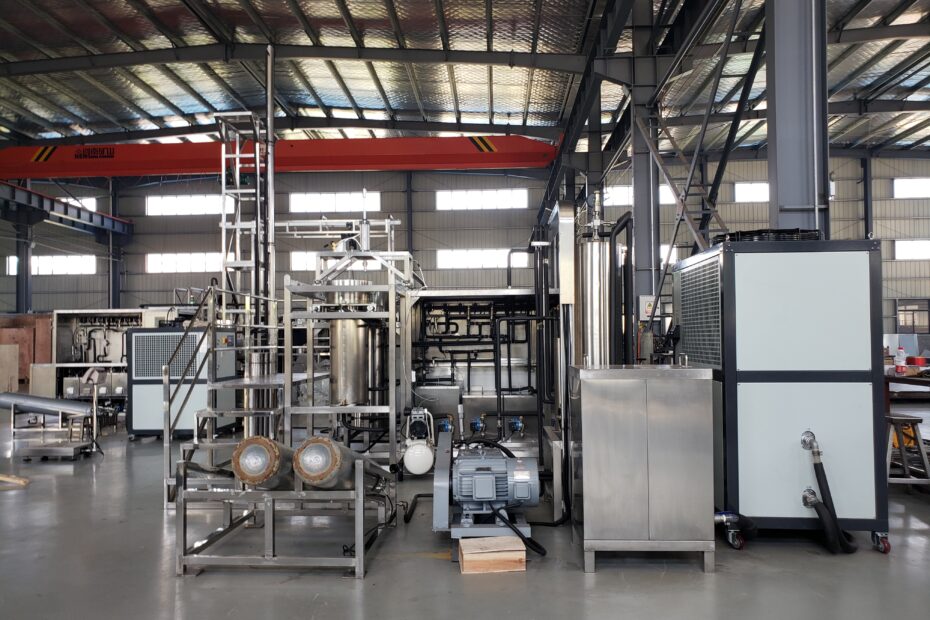Supercritical fluid technology has emerged as a powerful tool in pharmaceutical extraction processes, offering advantages such as high selectivity, efficiency, and environmental sustainability. This article explores the application of supercritical fluid technology in pharmaceutical extraction processes, highlighting its significance in the pharmaceutical industry.
Supercritical fluids are substances that exist at temperatures and pressures above their critical point, exhibiting properties of both liquids and gases. Carbon dioxide (CO2) is the most commonly used supercritical fluid due to its non-toxicity, non-flammability, and low critical temperature.
Top 4 Advantages of Supercritical Fluid Extraction in Pharmaceuticals
Supercritical fluid extraction (SFE) offers several advantages over conventional extraction methods:
- High Selectivity: Supercritical fluids can be tuned to selectively extract target compounds while leaving unwanted components behind, minimizing the need for purification steps.
- Mild Operating Conditions: SFE operates at relatively low temperatures and pressures, preserving the integrity of heat-sensitive compounds and reducing the risk of degradation.
- Environmentally Friendly: Supercritical fluid extraction eliminates the need for organic solvents, reducing environmental impact and complying with green chemistry principles.
- Versatility: SFE can be applied to a wide range of compounds, including lipophilic and hydrophilic substances, making it suitable for various pharmaceutical applications.
Applications of Supercritical Fluid Technology in Pharmaceuticals
1. Extraction of Active Pharmaceutical Ingredients (APIs)
Supercritical fluid extraction is widely used to extract APIs from natural sources such as plants, herbs, and marine organisms. CO2-based SFE allows for the efficient extraction of bioactive compounds while maintaining their structural integrity.
2. Removal of Impurities
Supercritical fluid technology is employed to remove impurities and contaminants from pharmaceutical products. SFE offers high selectivity, ensuring the removal of specific impurities without affecting the desired compounds.
3. Purification of Pharmaceuticals
Supercritical fluid chromatography (SFC) is a powerful separation technique used for the purification of pharmaceutical compounds. SFC offers high resolution, short analysis times, and compatibility with a wide range of detectors.
Comparison of Supercritical Fluid Extraction with Conventional Extraction Methods
| Parameter | Supercritical Fluid Extraction | Conventional Extraction Methods |
|---|---|---|
| Solvent | Supercritical fluid (e.g., CO2) | Organic solvents (e.g., ethanol) |
| Selectivity | High | Variable |
| Temperature | Moderate | High |
| Pressure | High | Variable |
| Environmental Impact | Low | High |
Future Perspectives and Challenges
While supercritical fluid technology holds immense promise in pharmaceutical extraction processes, several challenges remain to be addressed:
- Cost: The initial investment and operating costs associated with supercritical fluid extraction equipment can be high, limiting its widespread adoption.
- Scale-up: Scaling up supercritical fluid extraction processes for commercial production requires optimization and validation to ensure reproducibility and efficiency.
- Process Integration: Integrating supercritical fluid technology into existing pharmaceutical manufacturing processes may require modifications and validation of regulatory compliance.
Conclusion
Supercritical fluid technology has revolutionized pharmaceutical extraction processes, offering unparalleled advantages in terms of selectivity, efficiency, and sustainability. From the extraction of active pharmaceutical ingredients to purification and impurity removal, SFE plays a pivotal role in pharmaceutical manufacturing. Despite challenges, ongoing research and development efforts continue to expand the applications of supercritical fluid technology, paving the way for innovation and advancement in the pharmaceutical industry.
